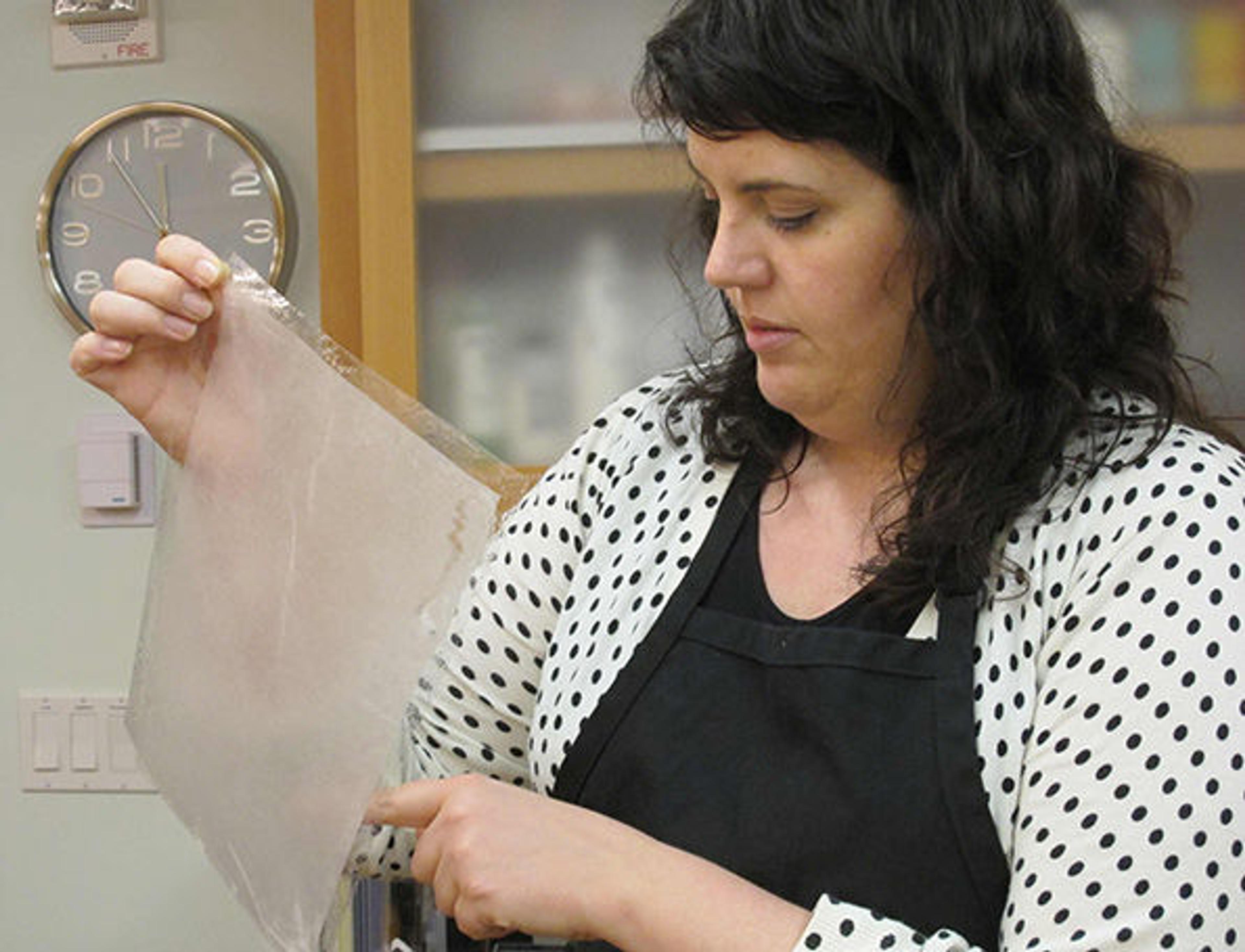
Workshop instructor Sarah Reidell demonstrates making pre-coated tissue. Photograph by Jae Carey
«The Sherman Fairchild Center for Book Conservation in Watson Library recently hosted a hands-on workshop taught by Sarah Reidell—conservator of rare books, paper, and parchment at the New York Public Library's Barbara Goldsmith Conservation Laboratory—entitled "Pre-Coated Repair Materials." This intermediate-level program was developed for conservators and advanced technicians with a thorough knowledge of common repair techniques for paper and parchment conservation. The workshop included training in the preparation of toned and untoned water-, solvent-, and heat-reactivated, pre-coated repair materials used for the conservation and stabilization of book and paper artifacts. During the workshop, participants had the opportunity to experiment on sample materials and to create comparative sample sets for future reference.»
Participants from four Metropolitan Museum conservation departments were invited to attend the workshop in order to bring different points of view that would enrich the workshop experience, and also to encourage collegiality and collaboration across Museum departments. Departments represented were the Sherman Fairchild Center for Book Conservation (Mindell Dubansky, Sophia Kramer, Yukari Hayashida, and Jae Carey), the Textile Conservation Lab (Janina Poskrobko), Asian (Japanese) Art Conservation (Jennifer Perry), and Objects Conservation (Kendra Roth). Jenny Adolfson also assisted in the preparation activities for the workshop and sat in on Sarah's introductory presentation.
At the beginning of the first day of the workshop, there were introductions and a PowerPoint lecture with an overview of the materials and techniques we would be learning. This was followed by a review of work stations for preparing the coating solutions and creating the various repair tissues, as well as an extensive demonstration by Sarah on how to prepare various tissues. In the afternoon, participants began to experiment with preparing their own tissues. During the course of the workshop we experimented with at least sixteen organic and synthetic adhesive mixes, shown in the photograph below. All of these mixes have different preparation workflows, adhesive and reversibility qualities, and application techniques which we were familiarizing ourselves with throughout the workshop.
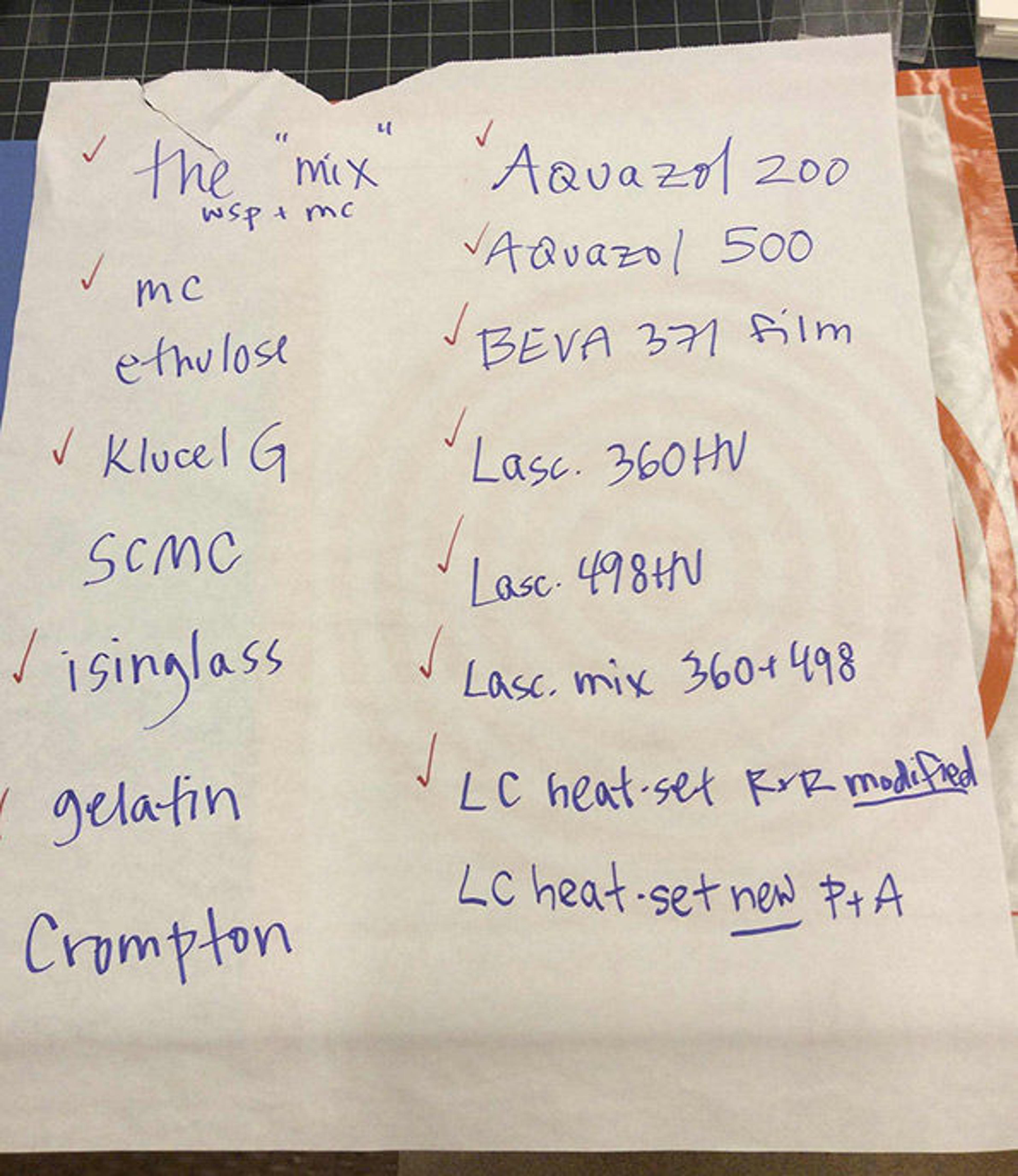
Photograph by Jae Carey
Here is Sarah's checklist of adhesive preparations for our experiments.
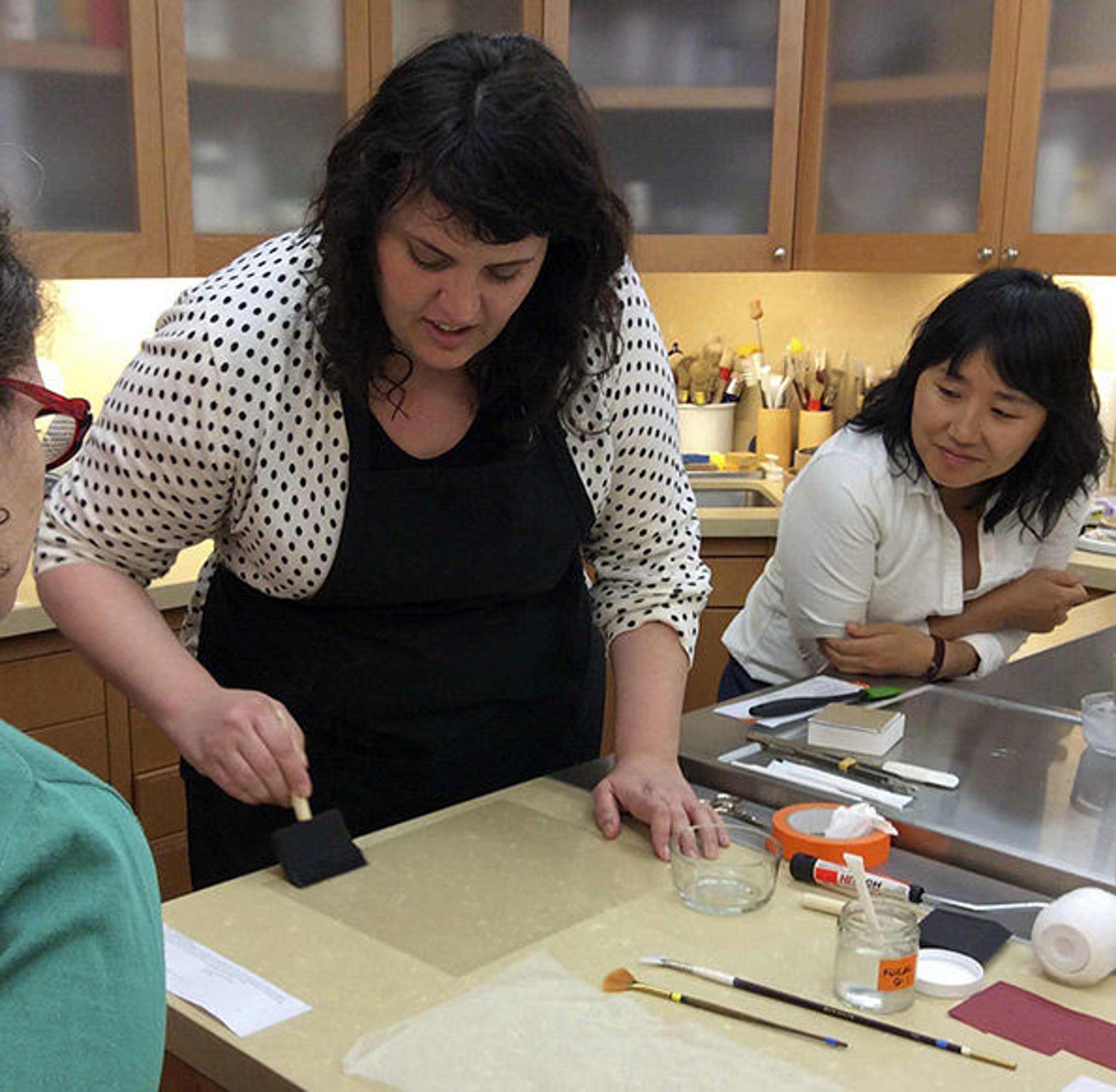
Photograph by Jenny Adolphson
Sarah demonstrated one of many ways to evenly apply a thick layer of adhesive to a polyester film surface.
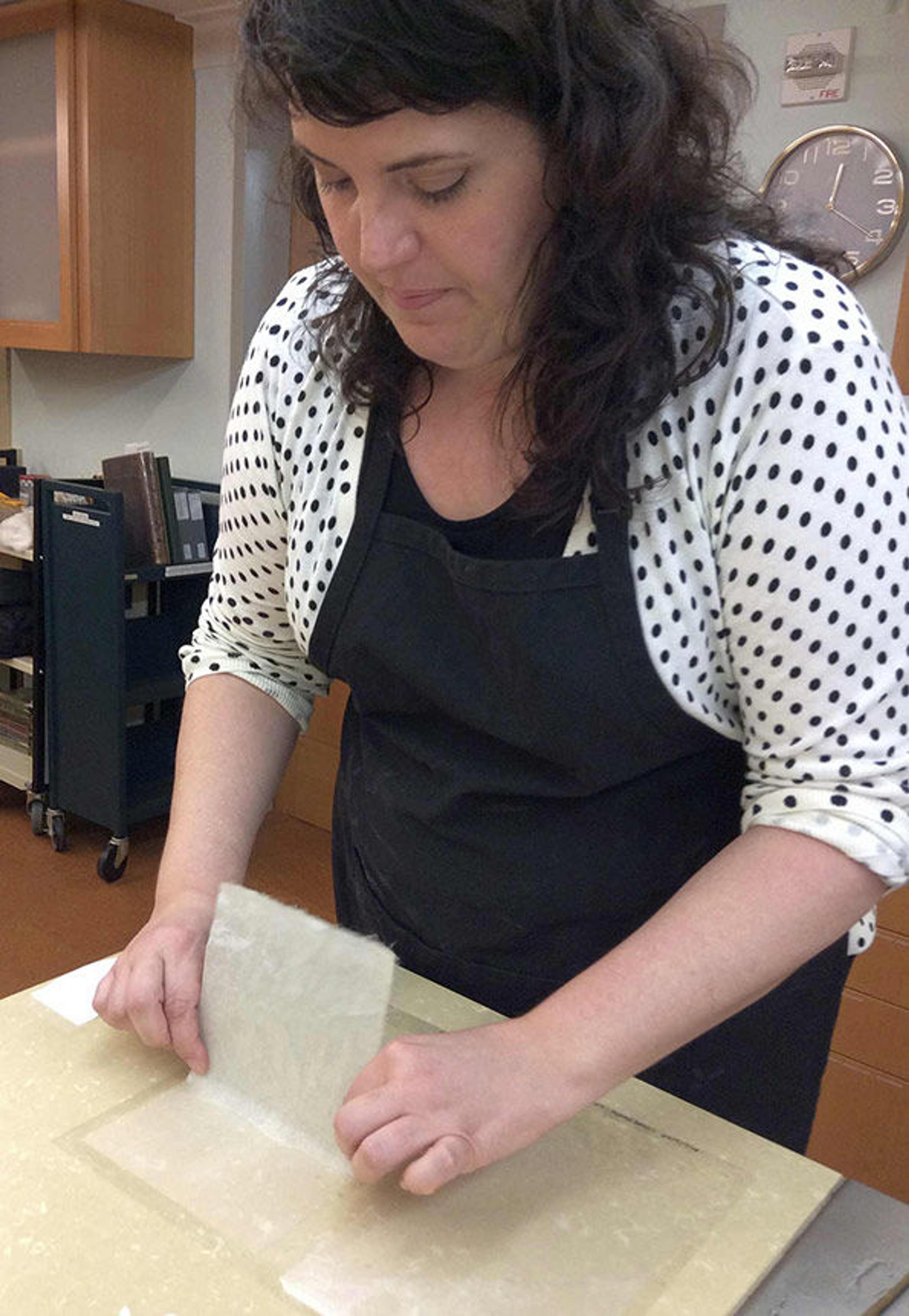
Photograph by Jae Carey
After the adhesive is applied, it will begin to quickly dry. Here, Sarah showed her preferred way to lay a sheet of Japanese paper onto the adhesive layer from the top down, so that there will be no air bubbles or wrinkles. This isn't always so easy to do and skill comes with experience.

Photograph by Jenny Adolphson
From left to right, Jennifer Perry, Kendra Ross, and Janina Proskrobko studied the various types of Japanese tissues we selected to experiment with, and determined which to try with particular adhesives for use in specific applications.
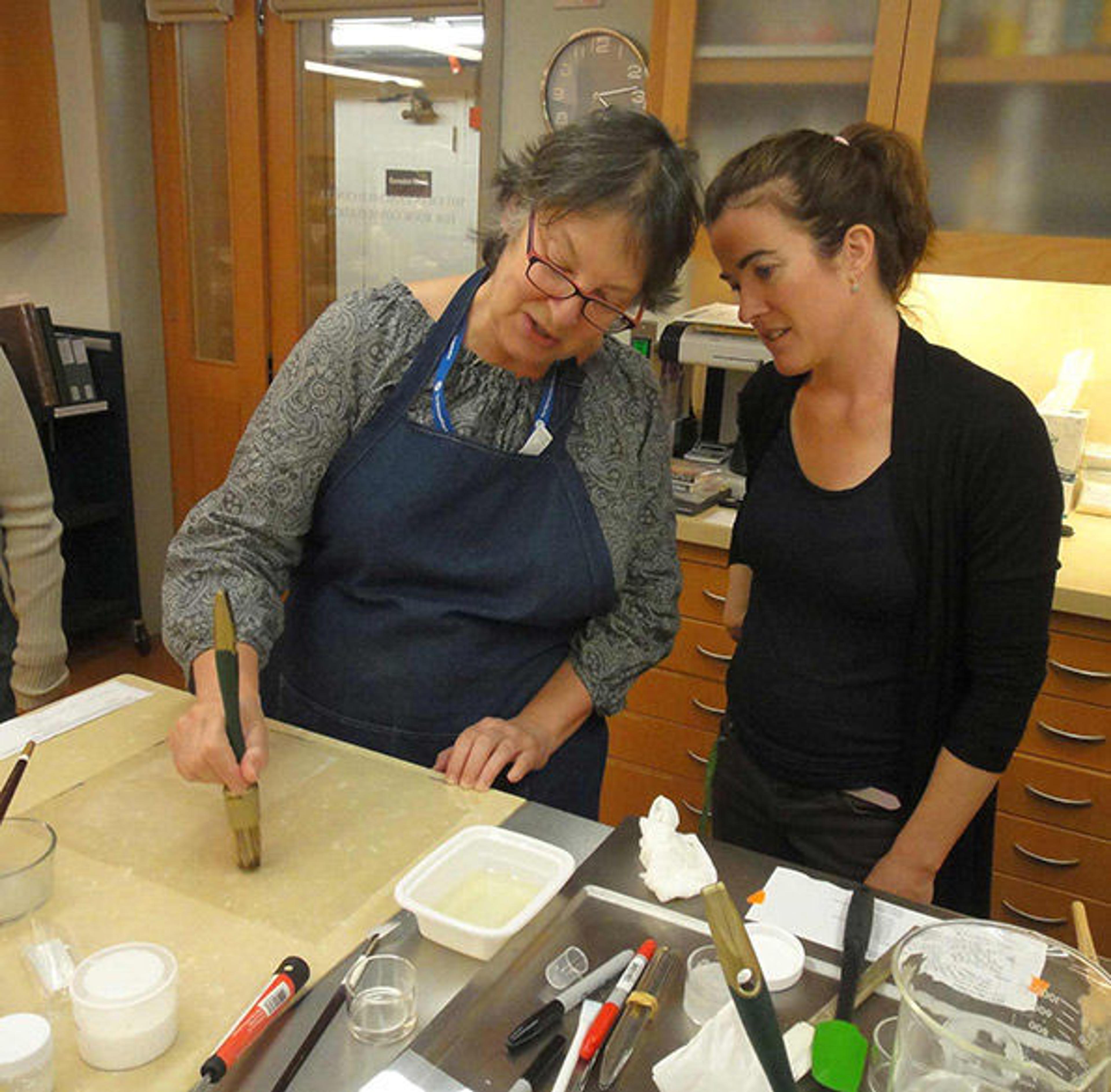
Photograph by Jae Carey
Mindell Dubansky, left, and Jennifer Perry practiced the stippling method of applying adhesive with a large round brush to a sheet of polyester film. Stippling allows the adhesive to be applied evenly.

Photograph by Jenny Adolphson
After the tissues were made, Sarah began showing us how to use them, beginning with her technique to trim out tiny, shaped pieces of repair tissue. In this case, the tissue could be reactivated with water—but not too much. Sarah showed us how she reactivates these pieces with a small amount of water applied by paintbrush onto the back of her hand. Once the pieces were hydrated, they were laid over the paper tears.

Photograph by Jenny Adolphson
Kendra Roth, left, and Yukari Hayashida practiced the technique of remoistening the repair tissues and applying them on sample book pages.
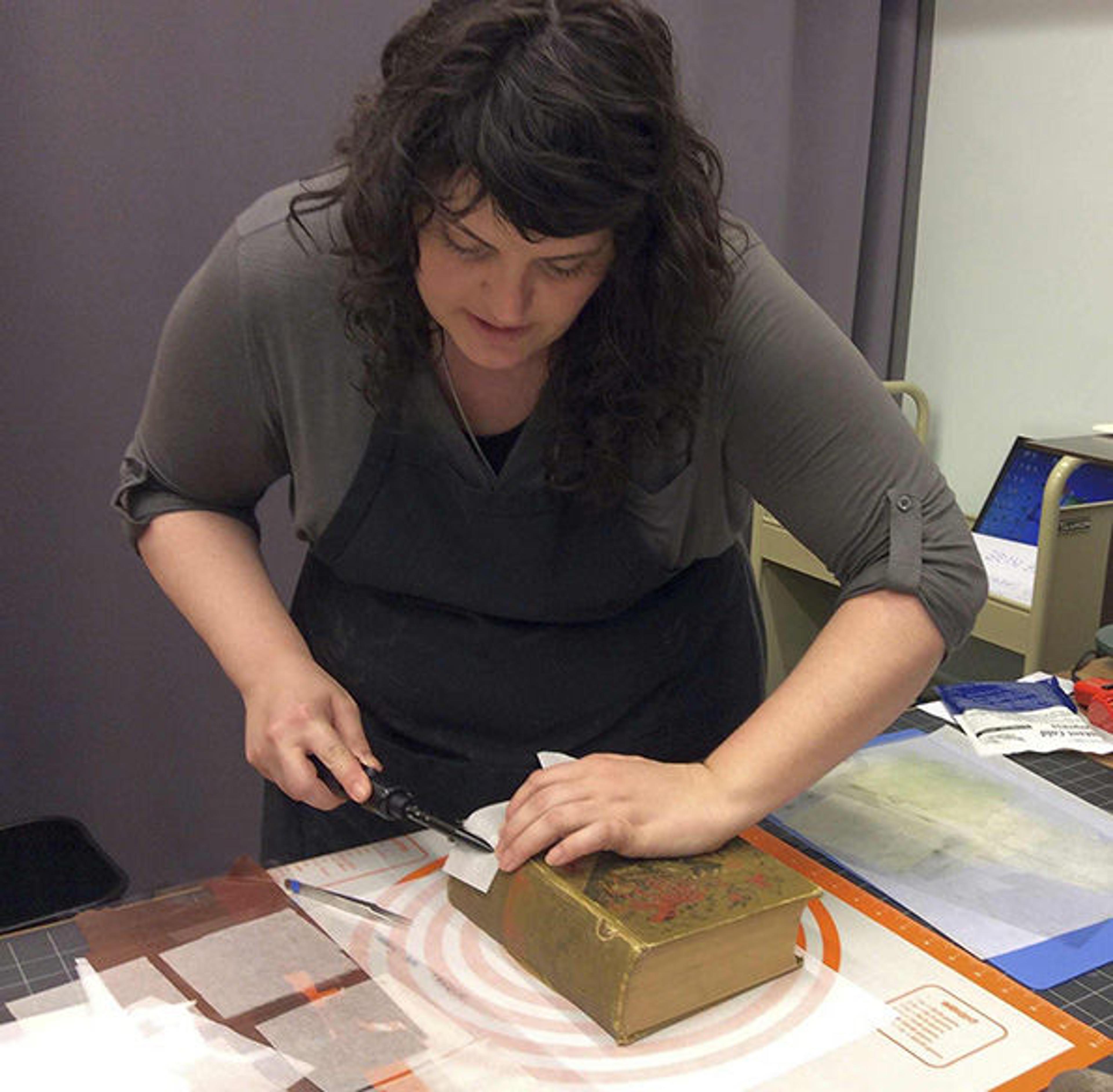
Photograph by Jenny Adolphson
In the workshop we experimented with using the pre-coated tissues to repair various books bound in different materials, particularly cloth and leather, which are materials we commonly have in our studio. Sarah then demonstrated a technique she might use for repairing torn cloth along the spine of a nineteenth-century publisher's binding.
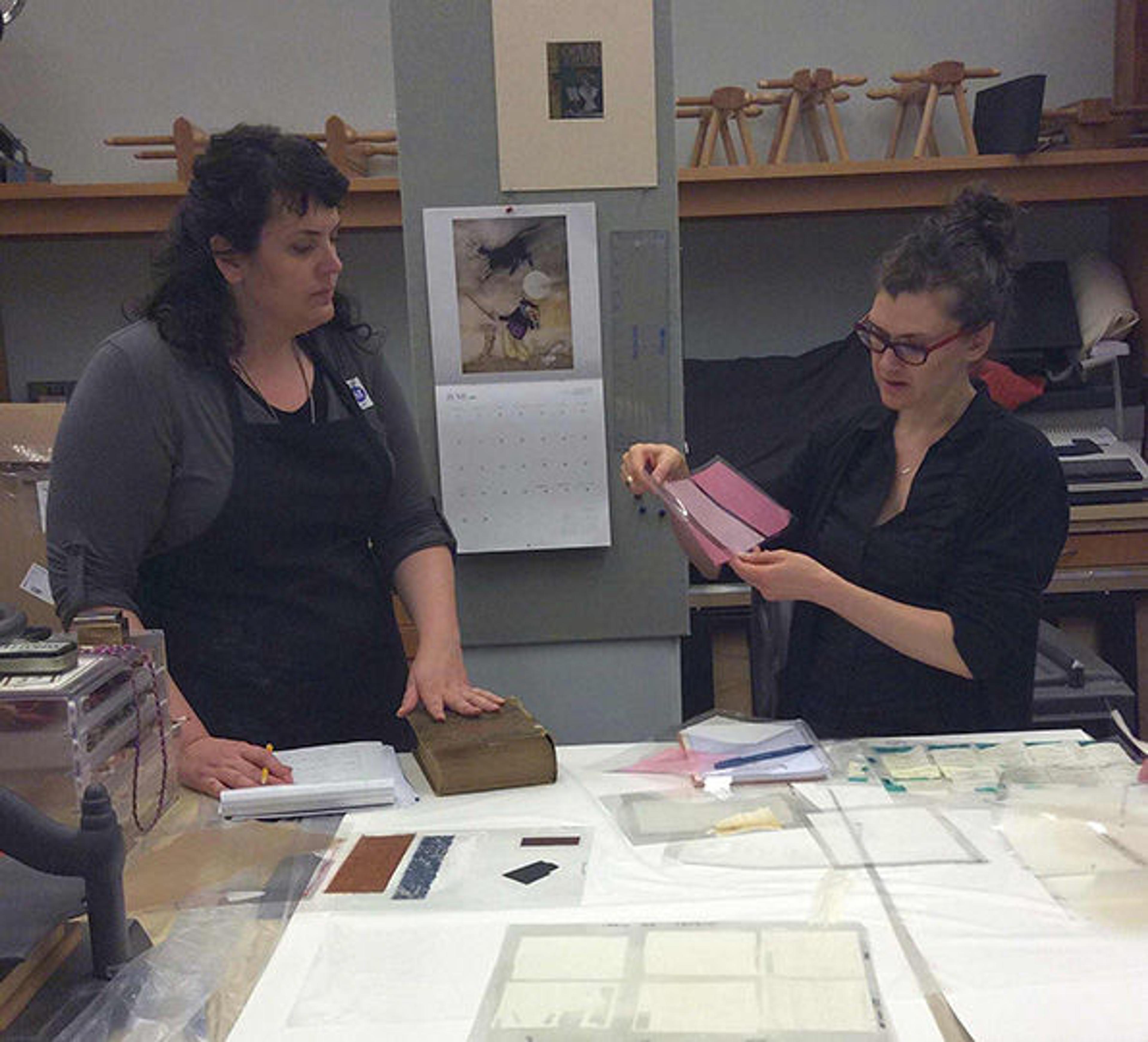
Photograph by Jae Carey
At the end of the second day of the workshop we had a "show and tell" to discuss our results. In the above photo, Sophia Kramer is showing tissues that she made and toned with red acrylic paint and additives to achieve an even application.
By the end of the workshop, everyone felt that they had learned a great deal but also still had a lot more to learn. We made new friends and are looking forward to having Sarah back to teach another workshop in the near future.